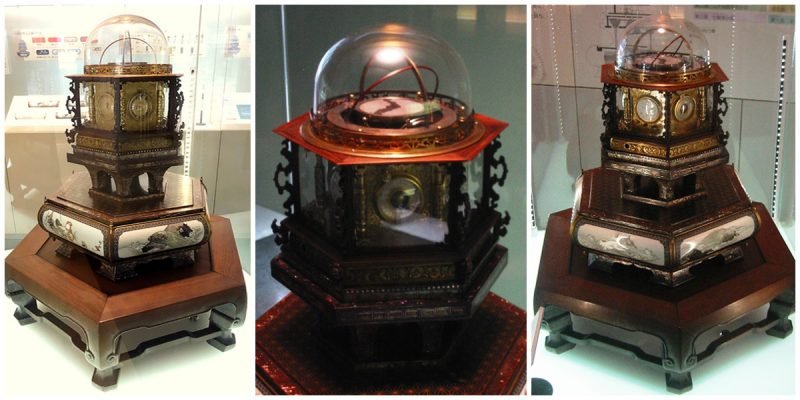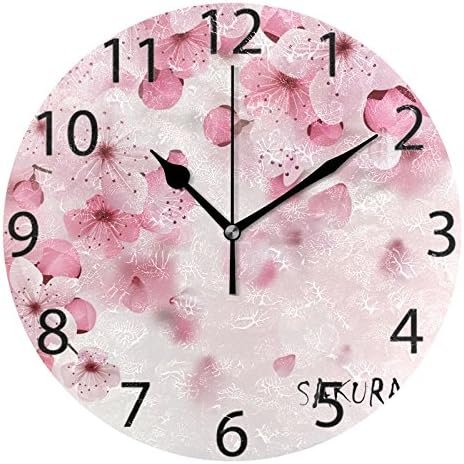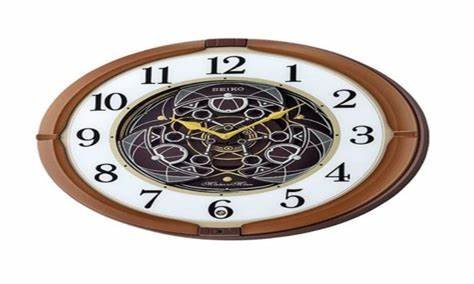The history of Japanese clockmaking is a fascinating journey that blends the nation’s deep-rooted cultural traditions with innovations in timekeeping. From early adoption of Western technology to creating clocks that align with Japan’s unique timekeeping needs, Japanese clockmakers have made significant contributions to the global world of horology.

Introduction to Timekeeping in Japan
Before clocks were introduced to Japan, the measurement of time was largely based on natural cycles, such as the position of the sun and the moon. Japanese society used various traditional methods to tell time, such as burning incense or using water clocks called “clepsydra”. These systems were quite common during the early periods of Japan’s history until foreign timekeeping devices were introduced.
Arrival of Western Clocks (16th Century)
Japan’s first exposure to mechanical clocks came in the mid-16th century, when Jesuit missionaries from Europe arrived. Among their many contributions, they brought Western-style mechanical clocks as gifts to influential Japanese figures. Notably, the first recorded clock in Japan was a gift from Francis Xavier, a Jesuit priest, in 1551.
These early clocks intrigued Japanese craftsmen, sparking a desire to understand and reproduce them. However, early Japanese clocks, or “wadokei” (Japanese clocks), needed to be adjusted to the traditional Japanese time system, which divided the day into unequal hours depending on the season.
The Wadokei: Japan’s First Clocks (17th Century)
Japanese clockmakers began developing the wadokei, a unique type of mechanical clock adapted to the Japanese time system. The Japanese method of timekeeping divided daytime and nighttime into six units, which varied in length depending on the season (longer in summer and shorter in winter for the daytime, and vice versa for nighttime).
The wadokei had a complex system that allowed for these seasonal time variations. By incorporating adjustable mechanisms, the clocks could adapt to changing daylight hours, making them distinct from Western clocks, which were designed for constant 24-hour cycles.
- Notable Innovations: The daimyo clock, a type of wadokei, was known for its intricate designs and precise timekeeping. These clocks often featured exquisite craftsmanship, reflecting the skills of Japanese artisans.
The Meiji Restoration and Modernization (19th Century)
The Meiji Restoration in 1868 marked a significant turning point in Japan’s clockmaking history. As Japan opened up to Western influences, the government adopted the Western 24-hour time system to align with international standards. This shift rendered the traditional wadokei obsolete.
During this time, Western clockmaking techniques were rapidly adopted, and Japan began producing more modern, Western-style clocks. Several clockmaking companies emerged, including Seiko, which was founded in 1881 by Kintaro Hattori. Seiko would later become one of the most influential names in global timekeeping.
Seiko’s Innovations and Global Impact
Seiko revolutionized the clock and watch industry on a global scale with its innovations. In 1969, Seiko introduced the world’s first quartz wristwatch, the Seiko Astron, which offered unmatched accuracy and reliability. This breakthrough in quartz technology not only solidified Seiko’s position as a leader in clockmaking but also changed the future of timekeeping worldwide.
Seiko’s contributions didn’t stop there. The company also developed the spring drive movement and has continued to lead in both mechanical and electronic clockmaking.
Other Notable Japanese Clockmakers
While Seiko is the most well-known Japanese clockmaker, other brands have also played significant roles in the development of Japanese clockmaking.
- Citizen, founded in 1918, is known for its Eco-Drive technology, which powers clocks and watches using light. This eco-friendly approach has been influential in modern timekeeping.
- Rhythm has gained a global reputation for its innovative and beautifully crafted clocks, particularly its Melody in Motion series.
Preservation of Traditional Clockmaking
Despite the modernization of timekeeping in Japan, there has been a renewed interest in preserving traditional Japanese clockmaking techniques. Craftsmen still produce wadokei clocks as historical and artistic pieces. These clocks are now considered rare and valuable, showcasing Japan’s deep connection to its cultural heritage and its contributions to the art of timekeeping.
The Legacy of Japanese Clockmaking
Today, Japan is regarded as a leader in both traditional and modern clockmaking. Japanese clocks and watches are synonymous with precision, craftsmanship, and innovation. From traditional wadokei clocks to cutting-edge quartz and eco-friendly timepieces, Japanese clockmakers continue to influence the global horology industry.
Conclusion
The history of Japanese clockmaking reflects the country’s ability to innovate while preserving its cultural identity. From the introduction of Western clocks in the 16th century to the rise of world-renowned brands like Seiko and Citizen, Japan’s clockmaking journey is a blend of tradition and technological advancement. This rich history ensures that Japanese timepieces remain respected and cherished worldwide.





I like this web site so much, saved to bookmarks.
Downloading 777pubcomdownload now. Hoping for a smooth installation and some big wins! Download it right here: 777pubcomdownload
Another great option for mobile gamers is ev88apk. Game selection is good, and its convenient to play wherever! ev88apk
Montags gibt es zum Beispiel 5 Freispiele für den Slot der
Woche, während treue Mitglieder am Wochenende insgesamt 150 Freispiele
erhalten können. Boni und Freispiele sind ein wesentlicher Bestandteil des Online Casino Erlebnisses und können einen großen Unterschied machen. Ein gutes Live Casino zeichnet sich durch eine breite Spielauswahl, faire Setzlimits und qualifizierte Croupiers
aus. Diese Spiele bieten nicht nur spannende Themen, sondern auch attraktive Gewinnmöglichkeiten.
Um unseren Lesern den Unterschied zu verdeutlichen, haben wir
hier gegenübergestellt, was genau die Spitzenanbieter viel besser machen als die Nullnummern. Die Online Casinos ohne Anmeldung
sind die neuste Riege unter den virtuellen Spielanbietern. Für die
mobilen Webseiten sprechen indes die höhere
Spielauswahl und deine Flexibilität. Erwähnenswert ist lediglich, dass online neue Game-Versionen hinzugekommen sind, die ihr in den Casinos draußen auf dem Land nicht findet.
Wer an den neueren Spielautomaten seine Runden dreht, hat nahezu immer
die Freispiele im Visier.
Fast alle Casinos verfügen über einen FAQ-Bereich, in dem
Sie selbst Antworten auf die am häufigsten gestellten Fragen finden können. Nur wenige Glücksspielseiten bieten die telefonische Kontaktaufnahme mit dem Support an. Die besten Casino Seiten bieten die beste Möglichkeit,
den Support zu kontaktieren – Live-Chat. In einem Casino
mit deutscher Lizenz ist das Einsatzlimit mit 1 Cent bis
1 Euro bescheidener und auch bei Spielen kann die 5 Sekunden Regel gelten.
References:
https://online-spielhallen.de/drip-casino-test-bonus-auszahlungen/
Mit einer großen Auswahl an Themen, Bonusfunktionen und Jackpots bieten diese Spiele endlose
Unterhaltung und die Chance auf große Gewinne.
Live Casino Spiele bieten eine einzigartige und immersive Erfahrung in Online Casinos.
Die besten Online Casino Plattformen in Deutschland bieten eine Reihe von attraktiven Angeboten und Promotionen. Casino Online Deutschland bietet zahlreiche
Vorteile gegenüber traditionellen Casinos. Online Casinos in Deutschland bieten Ressourcen für verantwortungsvolles Spielen an.
Wenn Sie vor allem an Slotspielen interessiert sind, so können Sie jederzeit gerne unsere
spezielle Seiten besuchen, die voller kostenloser
Online Spielautomaten sind. Spielautomaten, auch Slots oder Slotspiele genannt, mögen heutzutage die beliebteste Art
von Casinospielen sein – aber es gibt jede Menge anderer Optionen von Spielen in Casinos, bei denen es
sich nicht um Spielautomaten handelt. Wenn Sie weiterlesen, werden Sie erfahren, wie Sie kostenlose Glücksspiele ohne Registrierung und ohne Download spielen können, ohne dabei Ihr eigenes Bankkonto zu belasten. Wenn Sie
Casinospiele mögen, aber Ihr eigenes Geld nicht aufs
Spiel setzen möchten, wird dieser Abschnitt unserer Webseite, der
voll mit Online Casinospielen ist, genau das
Richtige für Sie sein. Wir bei Casino Guru haben aber immer schon den Standpunkt vertreten, dass Sie die Spiele immer
zuerst ausprobieren sollten, bevor Sie diese um echtes Geld
spielen.
References:
https://online-spielhallen.de/hitnspin-promo-code-2025-bester-bonus-hier-sichern/